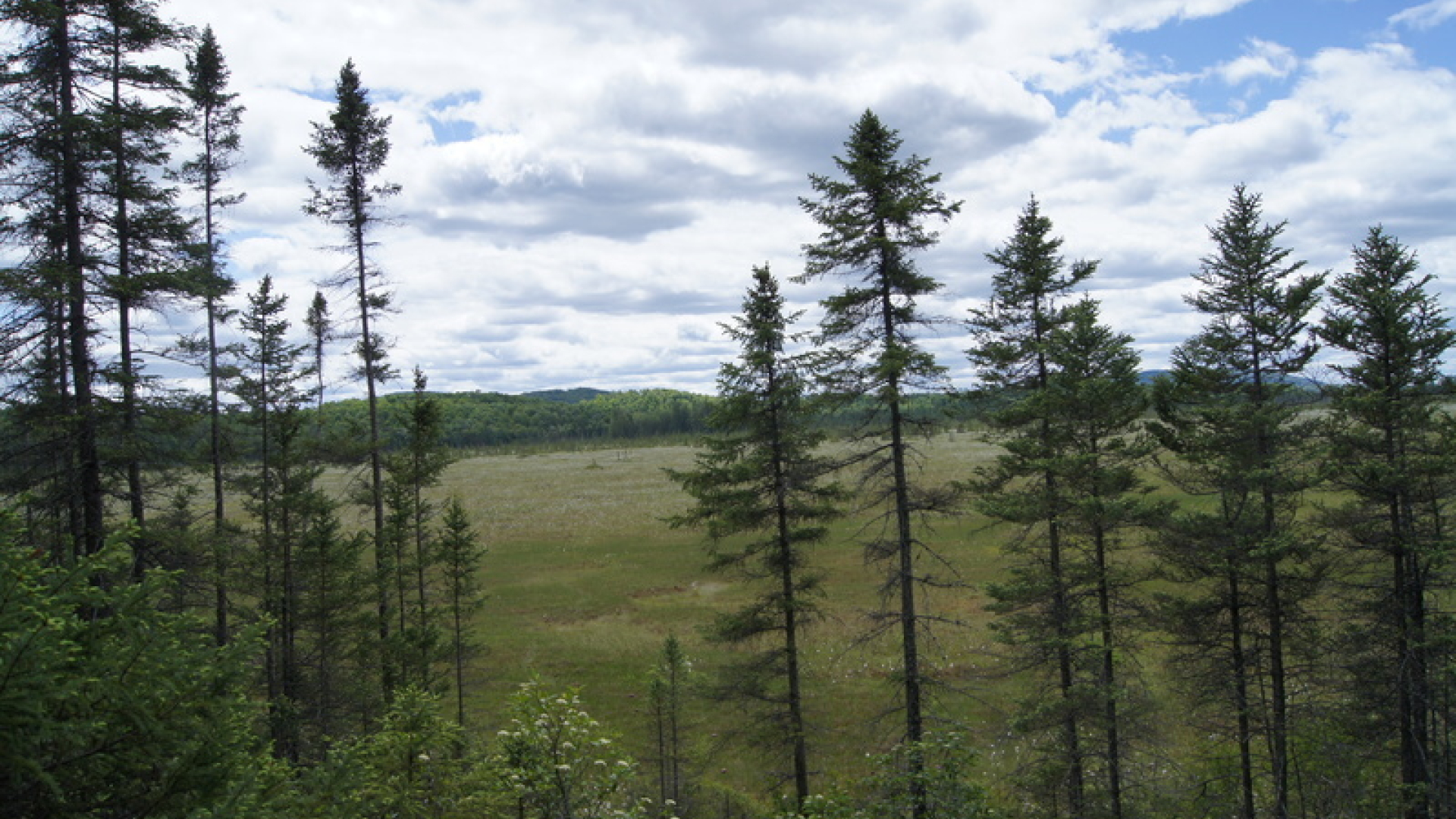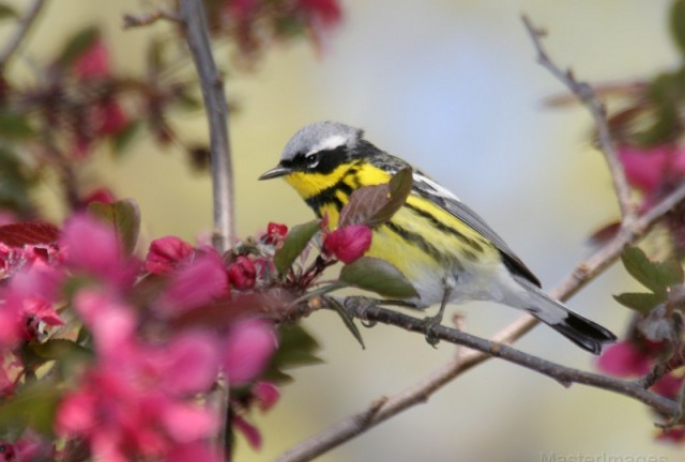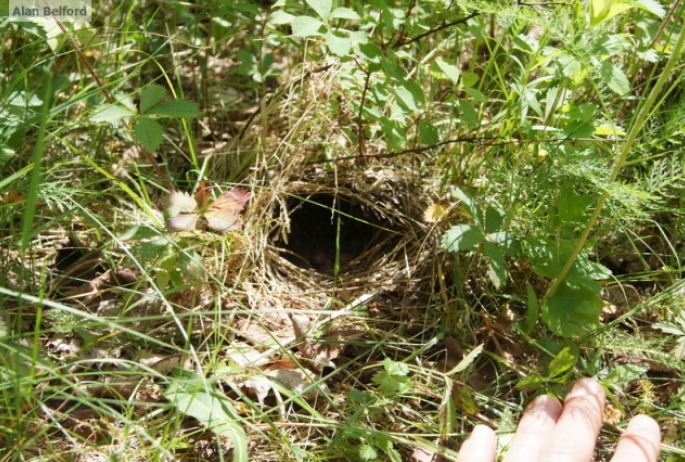2nd Largest Peat Land in the ADKS
Since Spring Pond Bog is the second largest peat land in the Adirondacks, it offers birders an array of habitats for finding species. I’ve led an annual birding trip there with The Wild Center the past few years and we once again took a trip to Spring Pond this year as well.
The birds were initially quiet, but we were soon adding species in the coniferous forests such as Red-breasted Nuthatch, Nashville Warbler, Magnolia Warbler, Black-and-White Warbler, and Golden-crowned Kinglet. We also found a pair of Pine Warblers constructing a nest high up in a white pine tree.
We walked out along the dirt track which leads to Rock Pond, stopping along the alder-choked wetland which crosses the road. A Chestnut-sided Warbler sang from the brush, but remained hidden, as did a Swamp Sparrow. An Alder Flycatcher offered us quick views, but then flew out of sight. We had better luck with a Common Yellowthroat which hopped in plain sight low in an alder along the road. After a look at a Nashville Warbler which seemed to find it amusing to remain backlit by the sun, we turned around and began to drive the long winding road to the bog itself.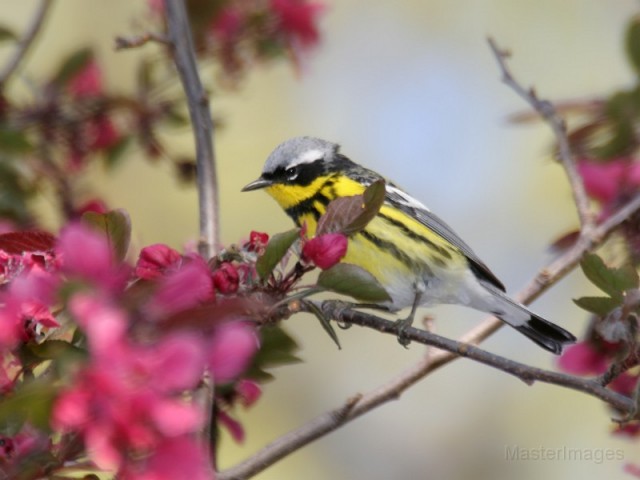
A Local Swimming Beach Along the Way
We stopped at several places along the way including at the local swimming beach where we watched a Common Loon dive and listened to the subtle difference between the songs of Chipping Sparrows and Pine Warblers. As we approached the bog, the habitat became more coniferous in nature and the road crossed a series of small waterways. We stopped at a couple of these as well, finding Magnolia Warbler, Yellow-rumped Warbler, Northern Parula, and Alder Flycatcher. Mink Frogs and Green Frogs also called from the streams.
To the Bog
Eventually we reached the trail which runs along a glacial esker into the bog itself. As we stood at the trailhead taking a food break, we accidentally spooked a small bird from the ground right next to the parking area. I peered in through the grasses and other herbs and found the half covered shape of an Ovenbird’s nest with two alien-looking chicks and one egg inside. We took a chance to show everyone the nest, but then quickly moved on in order not to pester them.
We walked up the esker trail through a small patch of deciduous forest hearing Scarlet Tanager, Black-throated Green Warbler, and Black-throated Blue Warbler. The trail then descended into the bog and onto a small boardwalk where we were surrounded by bog-loving plants like Labrador tea, leatherleaf, sheep laurel, and pitcher plant. On the boardwalk we also had nice looks at the butt-bobbing propensity of a Palm Warbler.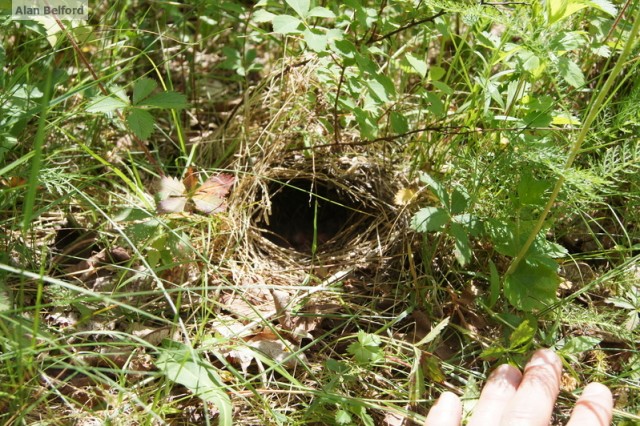
Continuing our way along the esker trail we kicked up a Ruffed Grouse which was dust-bathing in the dry, glacial till, leaving its bowl-like impression in the dirt. In fact, the blueberry and bracken fern which lined the path were also dry and it was strange not to have our pant legs soaked while walking through them. Further up the trail we disturbed a pair of White-throated Sparrows – probably about the 4th or 5th pair them we had scolding us all day. I began to pish to agitate them in order to see what else their calls would attract and we soon had a mob of scolding birds coming in to see what the fuss was all about. The White-throats were joined by a pair of Blue-headed Vireos, a Black-and-White Warbler, Yellow-rumped Warbler, Magnolia Warbler, and a beautiful male Canada Warbler.
Once the ruckus began to die down – and my lips were thoroughly tired from pishing – we left them alone and walked the rest of the way down the esker, enjoying views across the vast bog mat as we went. At the dead-end turn around, we stopped and listened to singing Lincoln’s and Savannah Sparrows. We turned and wound our way back towards the van.
When we arrived at the parking area we tried to quietly find an angle into the grasses to see the Ovenbird on nest, but we couldn’t find her cryptic nest despite knowing about where it was on the ground. As a few folks approach more closely for a better view, she spooked off suddenly and we took a quick look at the nest again. This time there were three young birds and no egg – the final egg had hatched while we were hiking on the esker! We quickly loaded up so as not to disturb them anymore. With that as a topper to our day we turned and drove back out to the gate. We found fifteen species of warblers that day, but the youngest three individuals were probably the most exciting.
